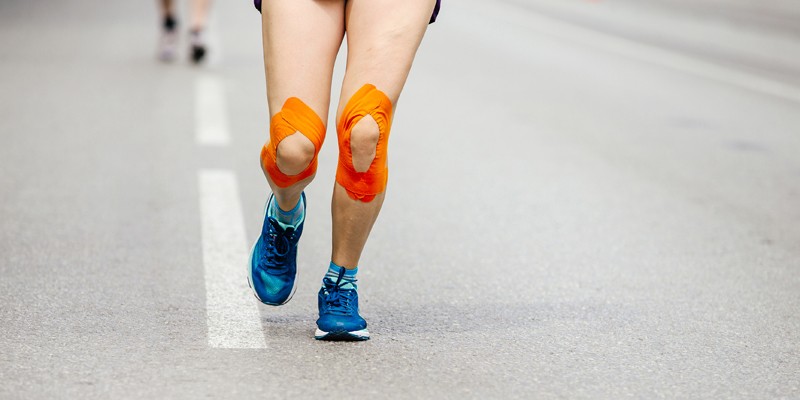By: Thomas Plowinske, SPT
Therapeutic Taping Techniques in Physical Therapy
Over the course of the last few years, it seems that we see more and more athletes wearing tape to improve performance and reduce injury while participating in their respective sports (i.e., the summer Olympics). You may wonder the purpose of the use of these athletic therapeutic taping techniques, as well as it’s effectiveness. At Capital Area PT and Wellness, the use of several different therapeutic taping techniques is an option in the right case or for the right individual. Below you will read an outline of different taping styles/techniques and how they may benefit our patients:
McConnell Taping Technique
McConnell Taping technique is used for a number of purposes. According to the McConnell Institute’s website, some effects of this method are: pain reduction, altering muscle activation patterns, changing joint position, and improving muscle strength, timing, joint range, and joint loading. This type of tape is more rigid and less flexible than Kinesio Tape (KT), and generally is not thought to be the technique of choice for higher-level activity such as athletics.
This technique is used widely in dealing with knee impairments, particularly improving position-sense around the kneecap to reduce pain and improve quadriceps function. However, this tape can also be applied to address the shoulder (scapular re-positioning, rotator cuff dysfunction), elbow (tennis/golfer’s elbow), hip (trochanteric bursitis, labral tears), ankle (instability, sprains) and more.
Kinesio Taping Technique
Kinesio Taping, on the other hand, is more rapidly gaining popularity thanks in large part to its use in pop-culture and professional athletes. This variety of tape is much more flexible, comfortable during movement, and even comes in an array of colors and designs. Compared to McConnell tape’s 1-2 day average life, Kinesio Taping can typically last for about 3-5 days.
Some of the benefits Kinesio Taping provides are:
- Pain relief
- Reduced swelling/inflammation/bruising
- Relief of muscle spasms and cramps
- Structural support on weak or injured muscles and joints
- Faster recovery of overused muscles
- Enhancing strength and muscle tone in weak or injured muscles
Some commonly used procedures in our clinic include taping to reduce symptoms of shoulder impingement, scapular postural correction, address tennis elbow, treat carpal tunnel syndrome, reduce neck & low back pain, and diminish swelling (particularly of the knee and ankle). One specific type of KT available is Rock Tape, which is becoming a favorite of both physical therapists and patients alike.
While it is true that the use of tape may not be therapeutic for every patient, it certainly would be advisable to talk to your physical therapist to see if it is right for you. There is an evolving list of indications for taping, much more than what is listed above. Call us today at our Saratoga Clinic at 518-289-5242, or in Queensbury at 518-289-5242 for more information on how these taping techniques may be used as an adjunct to an overall well rounded treatment approach.
References:
- http://mcconnell-institute.com/taping-series.html
- Campolo M, Babu J, Dmochowska K, Scariah S, Varughese J. A comparison of two taping techniques (Kinesio and McConnell) and their effect on anterior knee pain during functional activities. International Journal of Sports Physical Therapy. 2013;8(2):105-110.
- http://www.brianjohnpiccolo.com/imi-electives/KT_Student.pdf






